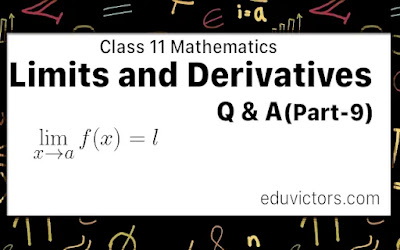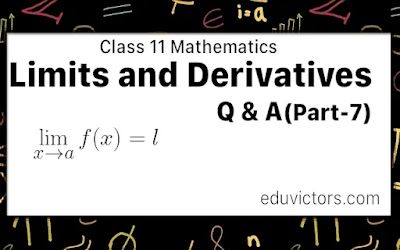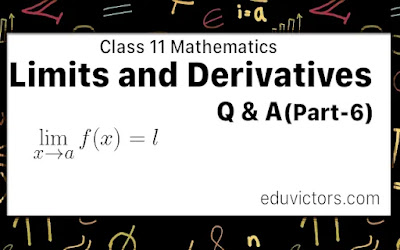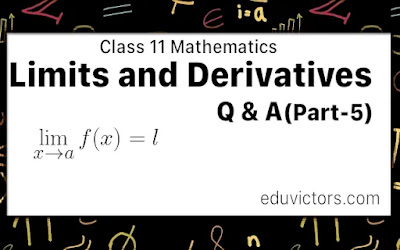DIFFERENTIATION OF STANDARD FUNCTIONS
CBSE Class 11 - Mathematics - Limits and Derivatives Part-10
You have learnt theorems of differentiation part-9. Let us proceed further. Here is a list of differentiation of some standard functions:
Blog provides NCERT solutions, CBSE, NTSE, Olympiad study material, model test papers, important Questions and Answers asked in CBSE examinations. References to Educational Sites and resources.
CBSE Class 11 - Mathematics - Limits and Derivatives Part-10
You have learnt theorems of differentiation part-9. Let us proceed further. Here is a list of differentiation of some standard functions:

CBSE Class 11 - Mathematics - Limits and Derivatives Part-9
You have learnt about finding derivatives using the first principle in part-7 and part-8. Let us proceed further. Here is a summary of theorems on differentiation.

 |
| Differentiation |

Derivatives Using First Principle

Q1: What is the derivative of a function at a point?
Answer: Let y = f(x) is a continuous function. It means the value of y changes as the value of x changes.
At x = a, is a point in its domain of definittion. The derivative of f at a is defines as:



Part-3 Algebra of Limits
In the previous post Limits and derivatives Part-2, we get basic ideas of the algebra of limits and also learned about rules and properties of limits.
Let us try to solve few problems:
Q1: Evaluate the given limit $\lim_{r\rightarrow 1} \pi r^2$
Answer: $\lim_{r\rightarrow 1} \pi r^2 = \pi(1)^2 = \pi$

Questions and Answers #class11Maths #Limits
In the previous blog post Limits and derivatives Part-1 , we learn
$\lim_{x\rightarrow a} f(x) = l$ and it is called limit of the function f(x)
① The two ways x could approach a number an either from left or from right, i.e., all the values of x near a could be less than a or could be greater than a.
② In this case the right and left hand limits are different, and hence we say that the limit of f(x) as x tends to zero does not exist (even though the function is defined at 0).

Part-1 - Questions and Answers
Q1: Define Calculus.
Answer: Calculus is that branch of mathematics that mainly deals with the study of change in the value of a function as the points in the domain change.
👉Note: The chapter "Limits and Derivatives" is an introduction to Calculus.
👉Calculus is a Latin word meaning ‘pebble’. Ancient Romans used stones for counting.
Q2: Who are called pioneers of Calculus (who invented Calculus)?
Answer: Issac Newton (1642 - 1727) and G. W. Leibnitz(1646 - 1717).
Both of them were invented independently around the 17th century.
Q3: What is the meaning of 'x tends to a' or x → a?
Answer: When x tends to a (x → a), x is nearly close to a but never equals to a.
e.g. x → 3 means the value of x maybe 2.99 or 2.999 or 2.999...9 is very close to 3 but not exactly equal to 3. Similarly, x may be 3.01, 3.001, 3.0001... from the right side and gets closer to 3.

Please turn off the ad blocker. This is only way that we can earn some penny. Please support us by trun off the ad blocker.
Thank you!!